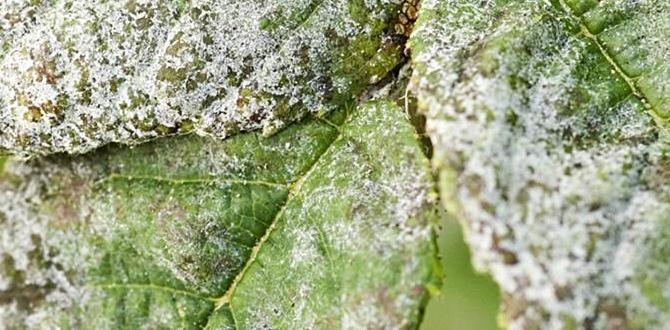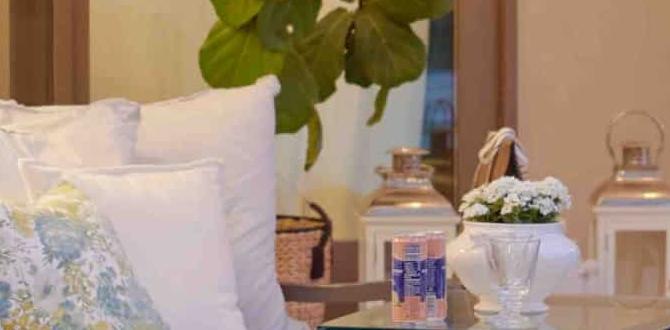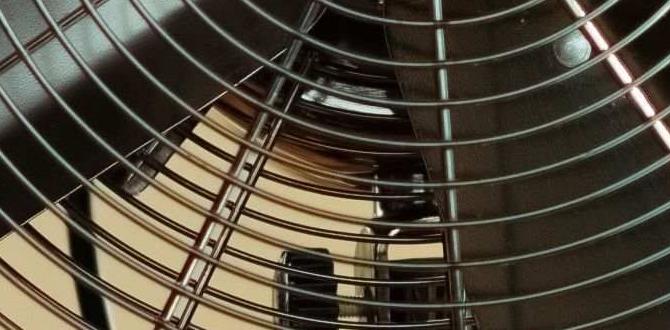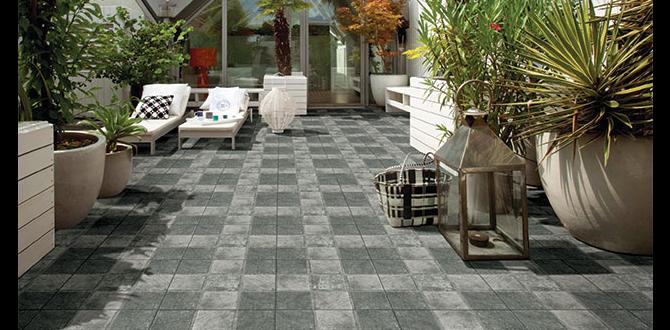Have you ever thought about growing your own vegetables? It’s easier than you think! Container gardens for vegetables let anyone create a mini farm, even in small spaces.
Imagine picking fresh tomatoes or crunchy cucumbers from your own backyard. With just a few pots or containers, you can transform a balcony or patio into a vibrant garden.
Did you know that container gardening can help save space and reduce weeds? Plus, it can be a fun project for the whole family. You can choose your favorite veggies and watch them grow day by day!
Join us as we explore the world of container gardens for vegetables. You’ll learn how to start your garden, choose the right containers, and care for your plants.
Ready to dig in? Let’s get started on this exciting journey to homegrown goodness!
Container Gardens For Vegetables: A Guide To Success
Container Gardens for Vegetables
Container gardens for vegetables are a fun way to grow your own food, even if space is tight. You can use pots, barrels, or even old containers! Home gardeners enjoy fresh tomatoes, peppers, and herbs all summer long. Did you know that some plants, like carrots and lettuce, grow well in small spaces? Imagine grabbing fresh veggies right from your porch. It’s easy to start today and brings tasty rewards to your table!Benefits of Container Gardening
Spacesaving solutions for urban gardening. Flexibility in plant selection and placement.Container gardening is a fantastic way to grow veggies, even in tight urban spaces. You can use small pots, hanging baskets, or vertical setups to fit into any nook. It’s like playing Tetris but with plants! Flexibility in choosing plants is a major perk. Want tomatoes in the sun? Go for it! Prefer herbs near the kitchen? Easy peasy! With container gardening, it’s fun to mix and match your greens and pull off a mini jungle in your apartment.
| Benefits | Details |
|---|---|
| Space-saving | Fit more in small areas. |
| Flexibility | Choose and place plants you love. |
Choosing the Right Containers
Materials: plastic, ceramic, metal, and biodegradable options. Size and shape considerations for different vegetables.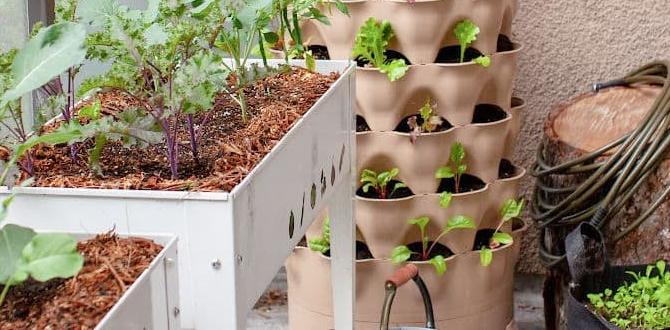
Picking the right container for your veggie garden is like finding the perfect shoe size—too big and you’ll trip over them, too small and you’ll feel squished! You can choose from plastic, which is lightweight and colorful, or ceramic, which can be pretty but may crack if you forget to bring them inside on a chilly night. Don’t overlook metal containers either—they’re trendy but can get hot. Plus, there are biodegradable options that make planting easy and eco-friendly.
Consider size and shape too! Tall veggies, like tomatoes, need deeper pots, while leafy greens enjoy wide and shallow ones. Here’s a simple chart to help you decide:
| Vegetable | Container Size | Container Type |
|---|---|---|
| Tomatoes | 5-7 gallons | Plastic or Ceramic |
| Lettuce | 1-2 gallons | Biodegradable or Metal |
| Carrots | 3-5 gallons | Plastic or Metal |
So, choose wisely and your plants will thank you with fresh, delicious veggies! It’s like giving them a cozy apartment!
Best Soil Mix for Container Vegetables
Importance of drainage and aeration. Recommended soil ingredients for optimal growth.Good soil helps your vegetables grow big and strong, like superheroes! Drainage and aeration are key. This means soil needs tiny holes for air and water to move around. If water sits, roots can drown, and we don’t want sad plants! For the best mix, combine potting soil, compost, and perlite. Here’s a quick look:
| Ingredient | Benefit |
|---|---|
| Potting Soil | Holds moisture |
| Compost | Feeds plants |
| Perlite | Improves drainage |
Mixing these helps create a happy home for veggies. Make sure they’re not wearing their waterlogged shoes!
Top Vegetables for Container Gardening
List of vegetables suitable for containers (e.g., tomatoes, peppers). Tips for choosing varieties based on container size.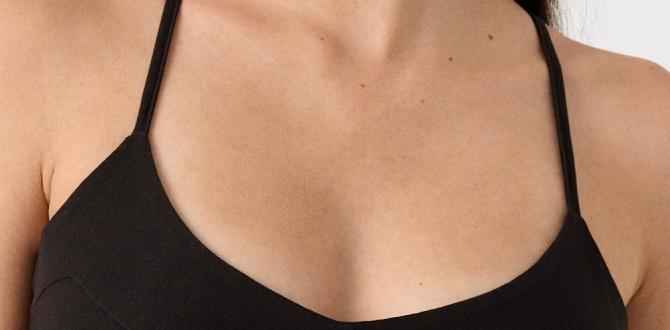
Growing vegetables in containers can be a fun adventure! Popular choices include tomatoes and peppers—both are like rock stars in the garden. If you have a small pot, consider growing radishes or lettuce since they don’t need much space. Here’s a quick table for some ideas:
| Vegetable | Container Size |
|---|---|
| Tomatoes | 5 gallons or more |
| Peppers | 3 gallons |
| Radishes | 1 gallon |
| Lettuce | 1-2 gallons |
Remember, bigger is better for larger veggies. A small pot may leave them feeling cramped. So, go ahead and plant those tasty treats!
Watering and Fertilization Techniques
Importance of proper watering procedures. Fertilization schedules and organic options for containers.Staying hydrated is key for container gardens—like how we feel on a hot day! Water deeply but less often. This ensures roots grow strong. Did you know plants need about an inch of water weekly? That’s like filling a small cup every Friday rather than splashing them with a hose daily!
For feeding, keep a friendlier approach. Use organic fertilizers like compost or worm castings. They act like treats for your plants without the junk! Aim to fertilize every four to six weeks. Use the table below for a quick reference:
| Fertilizer Type | Frequency |
|---|---|
| Compost | Every 4 weeks |
| Worm Castings | Every 6 weeks |
Happy gardening! Remember, a little water and food goes a long way, leaving plenty of room for growth and green thumbs.
Pest and Disease Management in Container Gardens
Common pests affecting container vegetables. Organic and chemical solutions for pest control.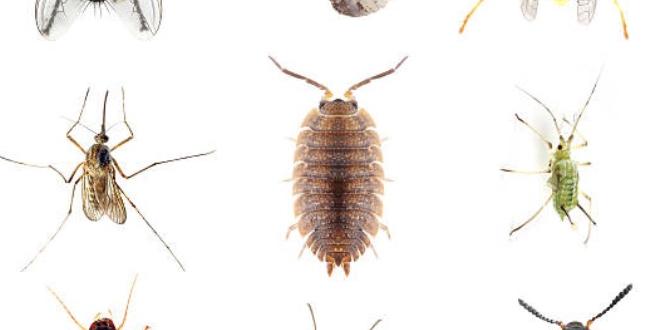
Pests can be sneaky little devils in container gardens. Common offenders include aphids, spider mites, and slugs. They might think your veggies are an all-you-can-eat buffet! But don’t worry, there are remedies. You can use organic solutions like neem oil and insecticidal soap. For a more standard approach, pesticides can help as well. Remember, always read directions—nobody wants a veggie soap opera!
| Pest | Organic Solution | Chemical Solution |
|---|---|---|
| Aphids | Neem oil | Pesticide sprays |
| Spider mites | Insecticidal soap | Acaricides |
| Slugs | Handpicking | Slug bait |
Stay sharp and watch for signs of trouble. Healthy plants equal happy gardeners!
Seasonal Considerations for Container Vegetable Gardens
Planting timelines for different climates. Tips for winterizing container gardens.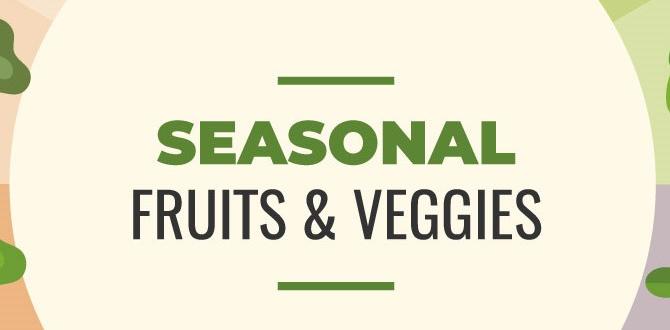
Growing vegetables in containers is like having a mini garden party, but seasons matter! In warmer areas, you can plant earlier. In chillier zones, wait until spring’s warm embrace. Use this handy planting timeline:
| Climate | Best Planting Time |
|---|---|
| Tropical | All Year |
| Temperate | Spring & Fall |
| Cold | Late Spring |
As winter waves hello, don’t forget to properly winterize your container gardens. Wrap them with bubble wrap to keep the plants toasty, or bring them indoors. A cozy plant is a happy plant, ready to bounce back in spring!
Creative Container Gardening Ideas
Unique container options and arrangements. Vertical gardening techniques for maximizing space.
Using unique containers makes gardening fun! Try these ideas:
- Old buckets
- Wooden crates
- Plastic bottles
- Tea cups
Arrange these containers in different ways. Stack them for cool vertical gardens! You can save space and add charm to your yard. Hang pots on a wall or use a ladder to hold plants. With creativity, your garden will shine!
What are some creative container gardening ideas?
Unique containers like buckets and crates can spice up your garden, while vertical gardening saves space and creativity.
Maintaining Your Container Garden
Regular care and maintenance routines. Signs of nutrient deficiency and how to address them.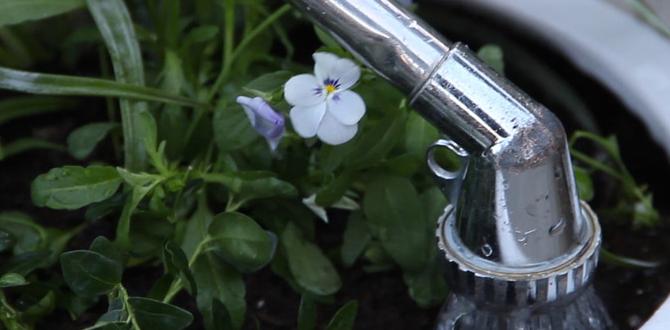
Taking care of your container garden is like pampering a pet. You need a routine! Water your plants regularly but avoid flooding them; they prefer a drink, not a swim. Look out for signs like yellow leaves, which can mean they need more nutrients. If your veggies are looking a bit pale, they might be craving food. Use fertilizers to perk them up. Here’s a quick guide:
| Sign | Nutrient Deficiency | Solution |
|---|---|---|
| Yellow leaves | Nitrogen | Feed with nitrogen-rich fertilizer |
| Purple stems | Phosphorus | Add phosphorus fertilizer |
| Pale greens | Iron | Use iron supplements |
Keep your garden happy, and it will reward you with delicious veggies. Remember, a little attention goes a long way!
Conclusion
In conclusion, container gardens for vegetables are fun and easy. You can grow fresh produce even in small spaces. Remember to choose the right containers, use good soil, and water regularly. Try planting your favorite vegetables today! You can also explore more online for tips and ideas. Let’s start our gardening adventure together!FAQs
What Types Of Vegetables Are Best Suited For Container Gardening?Some great vegetables for container gardening are lettuce, tomatoes, peppers, and carrots. You can also grow radishes and herbs like basil. These plants don’t need a lot of space. Make sure to choose pots with holes for drainage. Water them well and watch them grow!
How Do You Determine The Appropriate Container Size For Different Vegetable Plants?To choose the right container size for vegetable plants, look at how big the plant will grow. Small plants, like herbs, need smaller pots. Bigger plants, like tomatoes, need larger pots so their roots have space. You can check the seed packet or plant label for size tips. Make sure the container has holes for water to drain out.
What Soil Mix Is Recommended For Growing Vegetables In Containers?To grow vegetables in containers, use a mix of potting soil and compost. Potting soil helps with water drainage. Compost gives nutrients to your plants. You can also add some perlite for extra air and drainage. Mix these together well before planting your veggies!
How Often Should Vegetables In Containers Be Watered And Fertilized?You should water vegetables in containers about once a day, especially when it’s hot. Check the soil with your finger; if it feels dry, it’s time to water. You can fertilize them every two weeks to help them grow strong and healthy. Use a liquid fertilizer and follow the instructions on the label. This will give your vegetables the nutrients they need!
What Are Some Tips For Managing Pests And Diseases In A Container Vegetable Garden?To manage pests and diseases in your container garden, keep your plants healthy by watering them well. We should check our plants often for bugs or yellow leaves. If we see problems, we can pick off bugs by hand or use soapy water to spray them away. Planting flowers nearby can bring helpful bugs that eat the bad ones. Finally, make sure your containers have good drainage to prevent root rot.


